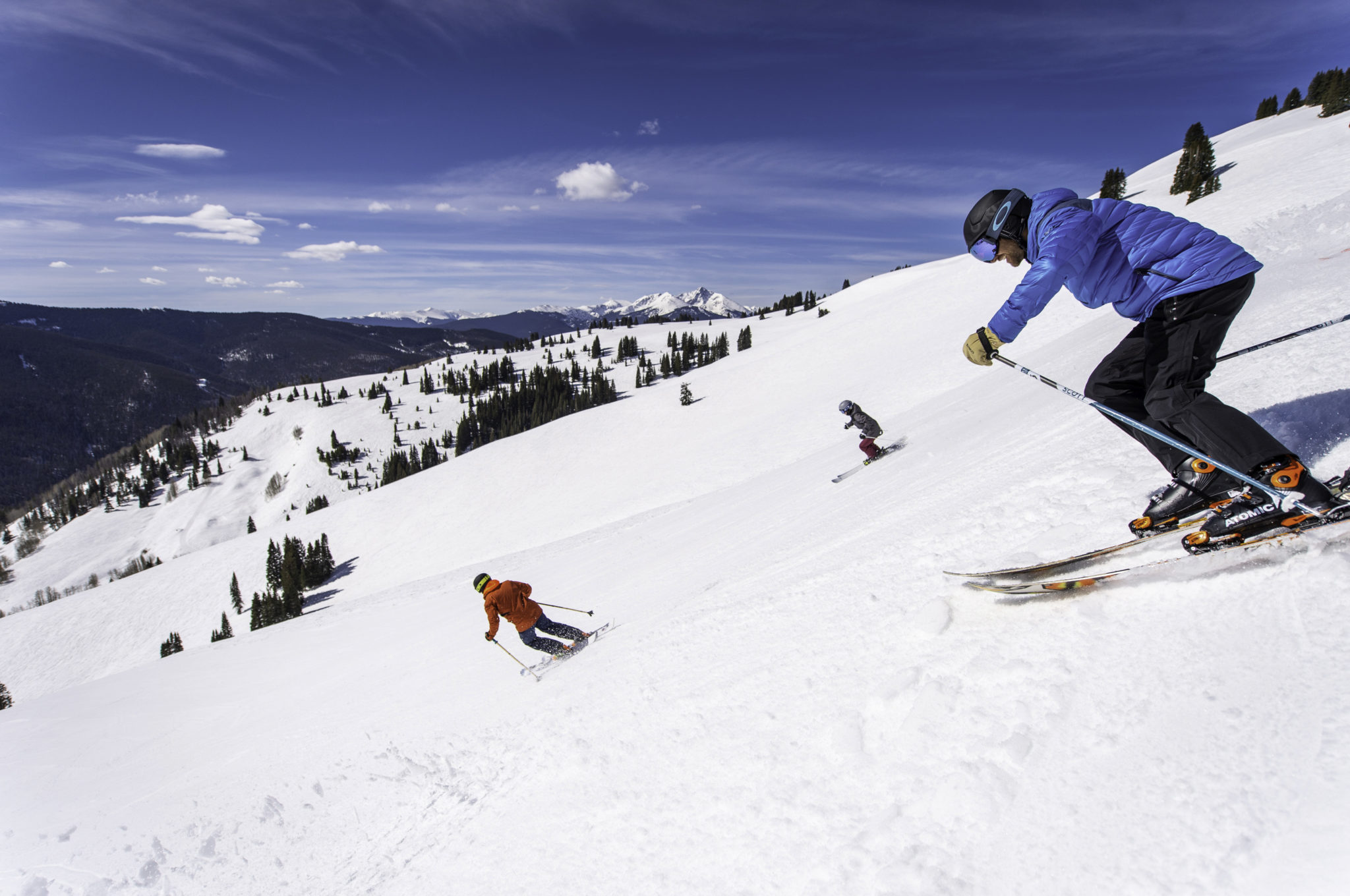Spring is a magical time for skiers. Not only do we get longer days, warmer air, and softer snow, but weekends spent with friends/family enjoying those fast, slushy laps always seem to take us back to spring break in college, right?
When we’re having so much fun, it’s easy to overlook the fact that our skis perform differently in these conditions. And, as such, they require different tuning and preparation.
During the regular season, temperatures are lower, and the snow tends to have a lower water content—especially here in Vail. These cold, dry conditions mean your skis don’t have to work as hard to repel water and keep you sliding. But when spring comes, temperatures rise along with the water content of the snow.
At this point, the snow is no longer in its original form of crystals or flakes, but has transformed into a saturated, grainy consistency typically referred to as “corn.” Unlike the abrasive, icy crust of the season’s colder days, spring corn offers a satisfying and forgiving feel, making it a uniquely enjoyable type of snow. But, because of its higher water content and temperature, your skis have to repel a lot of water when you’re skiing spring corn. And if your skis aren’t ready for those conditions, you’ll get a sluggish, sticky sensation as you try to make your way down hill.

Spring Happens
Racers or serious spring skiers should consider a re-tune of their skis to adapt to the changing conditions. The winter may have imparted some wear on the ski or snowboard base and in addition the snow is now wetter and dirtier. Here is what to consider/examine or bring your skis for us to handle at VBSR:
- Check your base flatness. Cold snow is abrasive and considerable wear and/or uneven wear may have occurred. If so, consider a stonegrind (see next entry).
- Warmer wetter snow means excess water under your base that leads to a slowdown from the suction effect. Your structure may be worn from the winter and need to be refreshed anyway. For wet/warm conditions should you be able to feel the structure under your fingers; in cold/dry conditions, you want a structure that you can see, but not feel with your fingers. See the Structure Theory link above for more information.
- Check your edge bevels. Over the course of a season, well-intentioned but overly aggressive diamond stone polishing can alter the bevel. The performance of the ski can be affected by this, especially the base bevel.
- Clean the bases (hot-wax-scrape-cleaning preferred – see the Wax Application link above) as dirt rises to the to of warm wet snow.
- Try molybdenum (moly) waxes. This additive will repel dirt.
- If you’re not using fluoro waxes or have been using low fluoro, switch to high fluoro wax and feel the glide.
- Brush extensively and completely.
